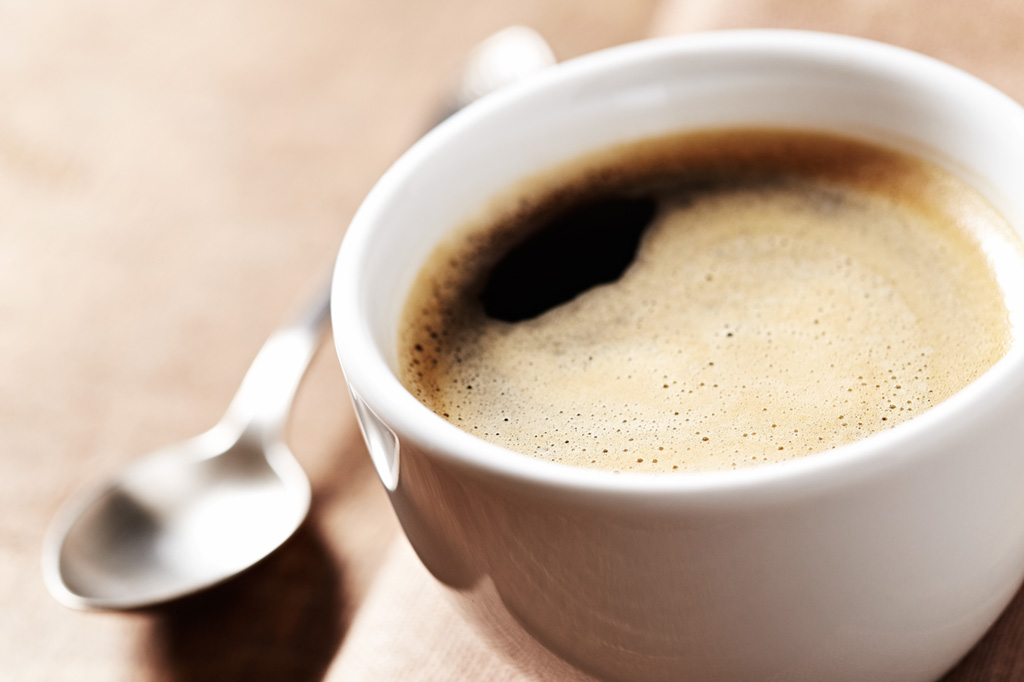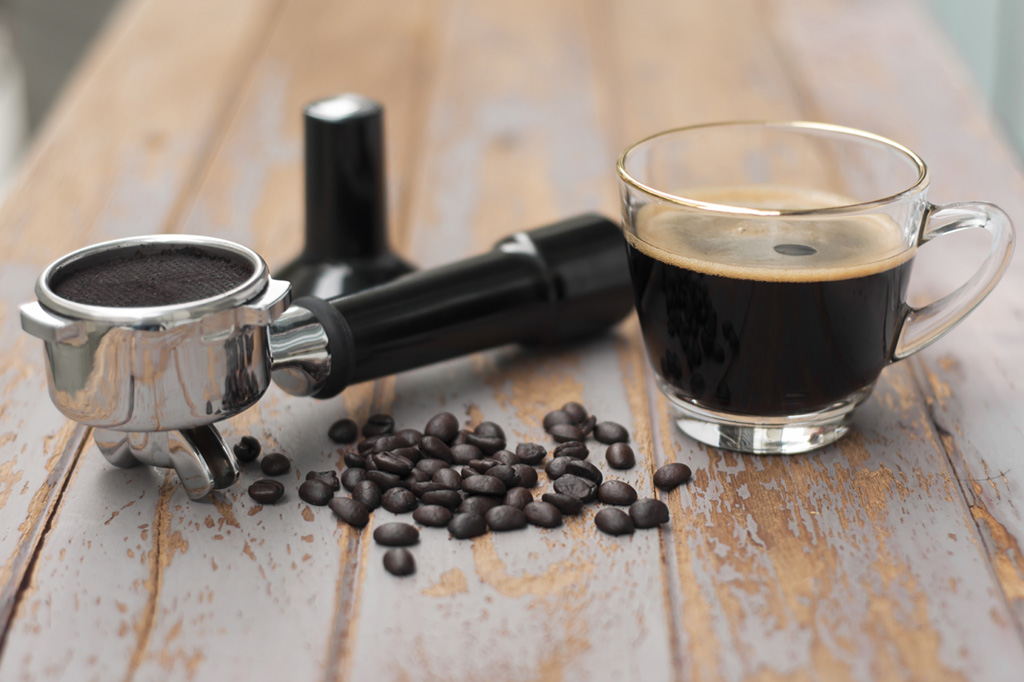Before 1970, drip coffee made from pre-ground commodity coffee scooped out of a tin can bought from the grocery store ruled the home coffee scene. Then Starbucks came along. After decades of coffee-lingo evolution, some coffee lovers now want to skip Starbucks’ lines, skip the new breed of hipster coffeehouses that followed in the Seattle giant’s footsteps, and brew a quality cup of joe in the peace and quiet of home sweet home.
Fortunately for them, the ability to brew an excellent cup at home has never been better. Armed with elemental knowledge and a little practice, it’s feasible to tap into your inner barista.
Coffee is Grounded in Science
First, get the notion that coffee is “an art form” out of your head. Brewing coffee, like roasting coffee, is more scientific than you think. Liz Roquet, owner of 10-year-old Lizzy’s Fresh Coffee in Ketchum, bristles when someone refers to “coffee only as an art” form.
“The ‘art of coffee roasting’ is a stereotypical phrase,” said Roquet. “Let me make an analogy: Say you learn to ski, and you learn the techniques of how to turn right, how to turn left, and where your hands are supposed to be. You learn skills. Skiing is technical, and you have to execute those skills. Coffee is no different. Science is what we talk about to our customers. A lot of people associate the art and then the outcome is unknown, or unattainable, and then it’s confusing.”
Roquet installed a custom coffee bar in her roastery to close the loop between roasted coffee and brewed coffee. The bar holds a variety of brewing equipment that Roquet uses to guide customers through the process of selecting the “right coffee” and the “right brewing method” for their specific goals. She developed a deductive methodology to get to the root of customer preferences:
Do you prefer fruity or toasty notes in your coffee?
How much money do you want to spend on equipment?
How much time do you have to prepare coffee when you’re ready to drink it?
Roquet is a Certified Level 2 Barista and a Certified Level 2 Roaster—the highest levels offered by The Specialty Coffee Association, a trade organization founded in 1982 with more than 12,000 members today. The daughter of Austrian immigrants, Roquet grew up in a coffee-drinking culture and fell in love with the flavor of coffee by the time she was 8 years old. After 15 years in the outdoor clothing and accessory business, she decided to stay in Ketchum when her company relocated to Portland. She turned her passion for coffee into a business with the opening of Lizzy’s Fresh Coffee in 2008.
“Coffee is a team sport,” Roquet said. “There’s the farmer, who is growing the green [beans], and the roaster, who has to roast it to its best potential, and then the customer, who buys that product to brew at home and deliver on its promise in his or her kitchen.”
That final player—the customer—can completely drop the ball at home. Roquet has practical advice on how to avoid the pitfalls of leaving the store with great beans and ending up with badly brewed coffee. Here’s a hint: It’s science.

Liz Roquet’s Five Steps to the Ultimate Cup of Home-Brewed Coffee
Storage
The first thing to know, Roquet stressed, is light, air, moisture and heat are coffee’s enemies. Keep coffee away from those things. A foil bag with a one-way de-gassing valve stored in a cool dark cupboard is perfect. The valve lets carbon dioxide, a natural by-product of roasting, out without letting oxygen in. Paper bags are not optimal because they are permeable. If you buy beans in a paper bag, transfer them to an airtight container as soon as you get home.
Freshness
Two weeks, according to Roquet, is the optimum window for peak coffee freshness. “Coffee isn’t a staple like rice or beans,” she said. “You have to think of it more in the baked goods lane. The aroma disappears and the oils go rancid.” Buy only as much as you can consume within two weeks.
Proper Grind
Grind whole beans just before brewing in a burr grinder. Why a burr grinder? “Blade grinders slice the coffee and create boulders and dust. The extraction can never be even and uniform,” Roquet said. Blade grinders are less expensive than geared burr grinders, and perfectly fine for grinding spices, but not coffee beans. “The grinder you use will have the biggest single impact on the outcome.”
And then there is the grind itself: fine, medium or coarse? That depends on the brew method. Espresso shots need a fine grind for the fast extraction time. Drip machines need a medium grind, and immersion brews, such as the French press, need a coarse grind.
Water-to-Coffee Ratio
“In coffee brewing, there is strength and extraction,” Roquet said. “It is simple time and volume numbers.” Science strikes again. For drip or filter methods—drip machines, pour-overs, including Chemex—she recommends a 1:16 to 1:18 ratio of coffee-to-water weight. While Roquet prefers metric weight measurements, she has converted weights into U.S. measurements for ease of home use. For example, she recommends 1-1/2 tablespoons of ground coffee to six ounces of filtered water for drip, pour-over and French press. Espresso is a different animal, requiring a finer grind and 1-1/4 tablespoons per ounce of water.
Time & Temperature
“If you take coffee, put water on it to dissolve it, 30 percent of what is in a coffee bean can be dissolved, but only 18-22 percent of it actually tastes good, so if you overextract, the coffee gets bitter. If you go shorter, it’s weak and watery, so you’re aiming for that sweet spot.”
Espresso is extracted at lightning speed (20-30 seconds) compared to a pour-over (three minutes) or drip coffee (six minutes). French press is a four-minute immersion brew.
The generally accepted temperature range for all coffee brewing is between 195-205 degrees Fahrenheit. Can you manipulate how things taste within that range? “Sure,” Roquet said. “For example, my ridiculously expensive espresso machine runs at 198 degrees. Why? Because 198 tastes better than 196 for the coffee we serve in our espresso bar. Now, maybe the home brewer doesn’t want to get that geeky.”
The Final Word
Roquet admits that even though the process from green coffee bean to cup is rooted in science, the final determination of a “good cup of coffee” lies in the taste. Does it taste good to you? “We can get you 90 percent there with the science [of brewing],” she said.
That last 10 percent depends on you. Do you like the taste or not? This is where art, if anywhere, joins the conversation. Brewing coffee may be pure science, but tasting coffee is subjective, just like appreciating—or not—art.
A Few Notes on Truly Fresh Roast
HelioRoast, a micro-roastery based in San Francisco, was founded by retired professor and former assistant chairman of the Theology Department at Notre Dame, Kern Trembath. Like Liz Roquet of Lizzy’s Fresh Coffee, Trembath takes a scientific approach to coffee roasting.
HelioRoast roasts coffee on-demand in a roaster with a five-pound capacity. “It sits on top of a machine that removes about 99 percent of smoke particulates and heat,” Trembath said, “which means I can roast inside without expensive venting and post-roast air-cleaning.” The roaster is also powered by solar panels, minimizing the carbon footprint.
The flavor of coffee is intricately entwined with the freshness of the roast, Trembath believes. “In general, wine grapes have around 400 to 450 flavor-bearing components, which leads to the richness of wine tastes. Coffee has over 800 such components,” Trembath said. Those components fade quickly with time. “Coffee remains optimally fresh for between 9 to 14 days after roasting. Grinding brings this time down to approximately 11 minutes,” he said. “It begins to get stale after this, which means the escaping carbon dioxide molecules are increasingly replaced by water molecules.”
While Trembath believes the “best” coffee is a matter of taste, there is, again, science behind the actual taste of coffee. “Coffee by itself is very sweet,” he said. “In fact, per unit, it has more sugar than sugar cane as measured on a Brix scale.”
“As a coffee lover, I don’t mind it when people add cream and sugar, but I hope they try it un-aided as well in order to experience its uniqueness,” he said.


